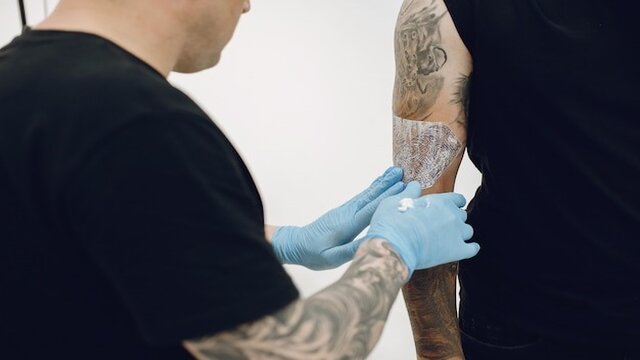December 22, 2023
Tattoo Removal Gone Wrong: How to Avoid a Disaster
Getting a tattoo removed is often tougher than getting one in the first place. With the advancements in laser technology, tattoo removal has become easier and more accessible over the years. However, the process can still go horribly wrong if proper precautions are not taken.
According to a study published in JAMA Dermatology, nearly 25% of people who get their tattoos removed report complications. Most side effects are minor, but some can be long-lasting and detrimental. So how does one avoid a tattoo removal disaster? Here are some tips:
Research Your Removal Clinic Thoroughly
This is perhaps the most critical step. You want to ensure you choose an experienced clinic with board-certified dermatologists, plastic surgeons, or cosmetic surgeons performing the procedure. They should have in-depth knowledge of using lasers best suited for tattoo removal based on ink color and skin type. Checking credentials, online reviews, and before/after pictures of their work can give you better insight.

Understand The Procedure
Knowing how tattoo removal works using lasers can help set realistic expectations. The number of sessions needed depends on the tattoo’s size, color, age, and your skin. Darker colors like black may take up to 10 sessions while lighter shades need fewer sittings. Recent tattoos are also easier to remove. Listen to your clinic’s recommendation on the process.
Use The Right Laser For Your Skin Tone
Advancements in QA-switched lasers, PicoSure and Picoway have made tattoo removal safer for all skin tones. However, consult your dermatologist about laser settings based on your unique skin pigmentation to prevent possible blistering, scarring, or hypo/hyperpigmentation complications. Customized treatments lead to better results.
Follow Aftercare Instructions Diligently
Your clinic will prescribe aftercare creams and advise you on caring for your skin post-treatment. This usually involves keeping the area moisturized while avoiding sun exposure or activities causing sweating for a few weeks. Not following instructions can lead to infections and poor healing. Avoid scratching or picking scabs. Report any unusual symptoms to your clinic promptly.
Have Realistic Expectations
Modern lasers may take only weeks to fade simpler, professionally done tattoos. However, homemade or amateur tattoos with multiple colors require several sessions spaced 3-4 weeks apart for complete removal. Understand that a shadow outline may persist and absolute removal depends on your body’s response. Set your expectations accordingly from the start.
Research Alternative Removal Options
If laser therapy isn’t feasible for medical reasons or your budget, ask your clinic about alternative tattoo removal methods like dermabrasion micro-needling, TCA cross technique, or surgical excision. While not always preferable, these options may work better and avoid trauma from repeated laser sessions in certain cases.
Have Patience During The Process
Tattoo removal requires immense patience as fading happens gradually. Have reasonable expectations of the timeline so you don’t get disappointed halfway. Take progress pictures to track changes session by session. Remember, slow and steady wins the race for safe, complication-free removal of permanent ink.
Consulting an accredited, experienced laser tattoo removal specialist and following their instructions is crucial for avoiding botched procedures. Be open about your medical history, skin concerns, and what you want your result to be. With realistic expectations and commitment to aftercare, you can successfully erase old tattoo regrets.



